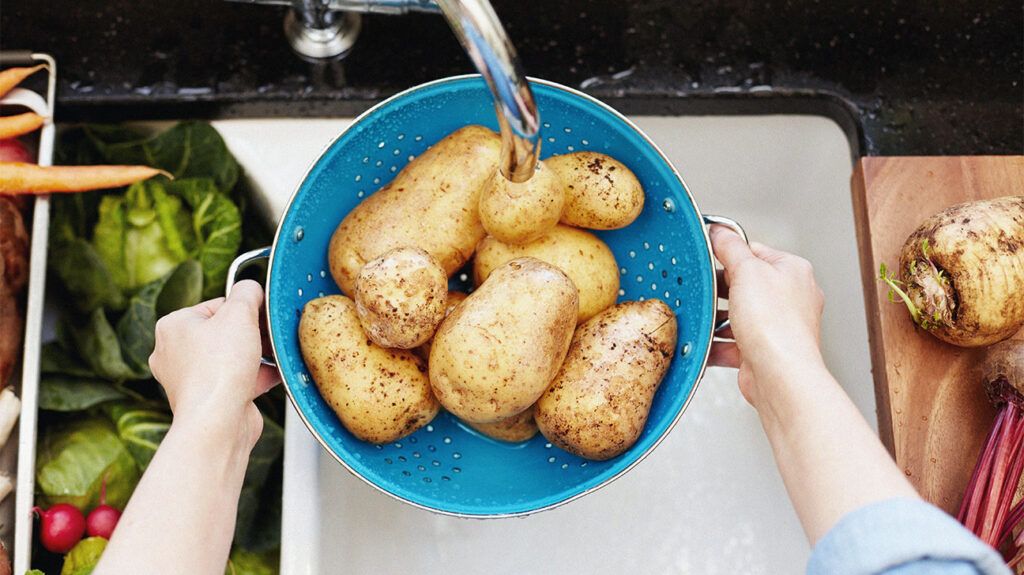Celiac disease is a chronic autoimmune condition in which eating gluten causes the immune system to attack and damage the small intestine. Gluten is a protein in various grains, including wheat, barley, and rye.
The only way to treat celiac disease is to completely eliminate gluten from the diet. This stops inflammation of the small intestine, allowing it to heal and gradually return to typical functioning.
This article explains how celiac disease affects a person’s diet. It also lists the foods that people with this condition may benefit from eating and those they need to avoid.

Celiac disease is a chronic digestive and autoimmune condition.
In people with this condition, consuming gluten
- bloating and gas
- abdominal pain
- nausea and vomiting
- constipation
- diarrhea
- loose, greasy, or foul-smelling stools
The American College of Gastroenterology (ACG) states that the only way to treat celiac disease is to completely eliminate gluten from the diet.
This stops the small intestine from becoming inflamed, allowing it to heal and function normally again. Simply reducing gluten intake will not prevent the inflammation or ease the associated symptoms.
People with celiac disease need to follow a gluten-free diet for the rest of their lives. While this may be difficult at first, the ACG suggests people typically adapt well over time, especially with the help of a trained dietitian.
Symptoms typically subside
The ACG explains that foods labeled “gluten-free” must contain fewer than 20 parts per million of gluten.
It lists the following foods as suitable for people following a gluten-free diet:
The ACG lists the following grains that contain gluten and explains that people with celiac disease should not consume them in any form:
The ACG also lists these foods that commonly contain gluten that people may overlook:
- commercial cereals
- pasta
- stuffings
- coating mixes
- foods for breading and basting
- marinades
- sauces
- broth
- processed meats
- imitation bacon and seafood
- croutons
- communion wafers
Learn more foods that contain gluten.
Below are some tips to help people with celiac disease maintain a gluten-free diet.
Read ingredient labels thoroughly
People with celiac disease need to read all labels on foods and beverages carefully to ensure the product does not contain gluten.
Some products contain questionable ingredients that may or may not derive from grains containing gluten. People with celiac disease need to avoid these products unless the label specifies that the product is gluten-free.
Some questionable ingredients to pay particular attention to include:
- modified food starch
- hydrolyzed vegetable protein (HVP)
- hydrolyzed plant protein (HPP)
- textured vegetable protein (TVP)
- vegetable gum
- malt vinegar
- soy sauce or soy sauce solids
- brown rice syrup
- dextrin
Prevent cross-contact
As the Celiac Disease Foundation explains, people need to avoid eating even small amounts of foods that have come into contact with gluten-containing foods during meal preparation or cooking.
This may be particularly challenging when sharing a home with people not following a gluten-free diet.
In the home
The following tips can help to reduce the risk of cross-contact in the home:
- having a separate space for preparing food
- using separate cookware or dining ware, if possible
- cleaning any shared items thoroughly before use
- properly sealing and storing any leftover food
- labeling gluten-free products to reduce the risk of ingesting gluten-containing foods by accident
Dining out
When dining out, people need to tell wait staff that they require gluten-free options. They can also ask the following questions to help reduce the risk of cross-contact:
- Is there a separate space in the kitchen for preparing gluten-free food?
- Does the establishment use separate cookware and utensils for gluten-free food?
- Does someone clean the surfaces and cookware before preparing gluten-free food?
- Is there a dedicated fryer for gluten-free food, or does someone change the oil?
Be aware of gluten in other products
People with celiac disease also need
Gluten may also exist in certain products a person uses around their mouth or transfers from their hands to their mouth by accident. Examples of such products include:
- certain cosmetics or skin care products
- some toothpastes and mouthwashes
Nutrition resources
For more science-backed resources on nutrition, visit our dedicated hub.
Celiac disease is an autoimmune condition that affects the digestive system. In people with this condition, gluten triggers the immune system to attack the small intestine, causing inflammation and damage.
The only way to manage celiac disease is to follow a gluten-free diet. This involves avoiding certain grains and any products containing or derived from these grains.
People with this condition also need to avoid other products containing gluten, such as certain supplements, skin care products, and oral hygiene products.
